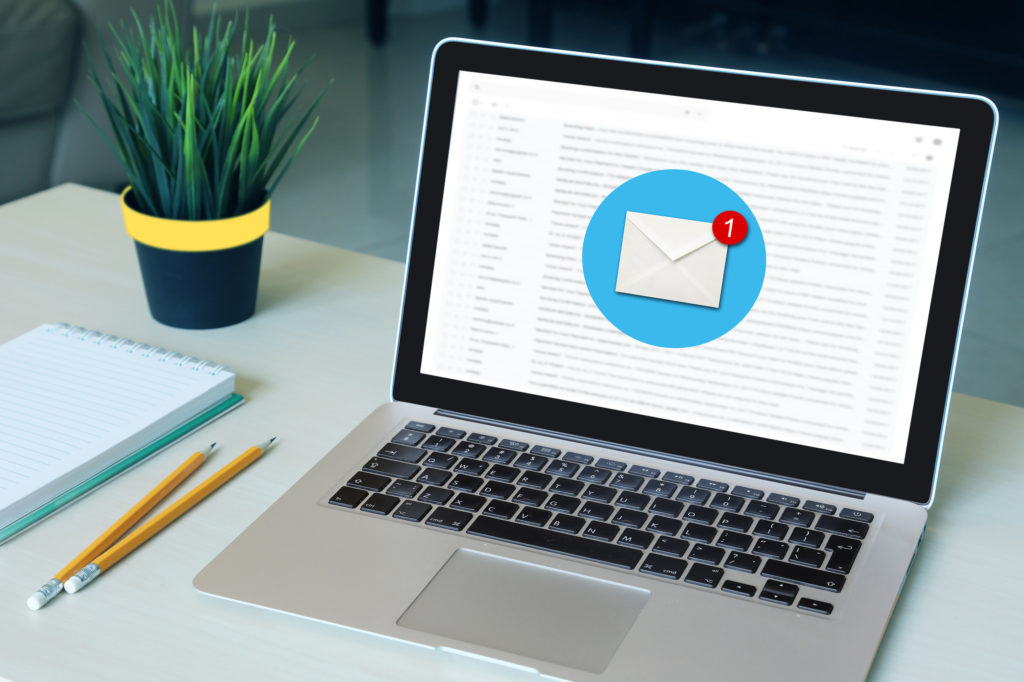Reach Your Small Business Customers with Email Marketing

Does email marketing still work? Considering the number of emails in your mailbox, it’s clear marketers still believe. And, in fact, email works. HubSpot reports that nearly 80% of marketers noted an increase in email engagement in 2019, and another study described at Litmus finds a whopping 42 to 1 return on investment with email campaigns. Of course, best practices make email deliver.
The three foundational elements of a solid email marketing program
Before you hit “send,” you’ll want to brush up on these three building blocks that are crucial to mass emails.
1. Create a clean list
If you’ve been collecting email addresses, good for you. “Owning” your list (instead of relying on social media platforms like Facebook) is a key step to connecting with your clients. However, it can be easy to overlook basic list-management principles.
First, you want to vet the addresses. Some of those emails you’ve been using may no longer be valid. According to one estimate at HubSpot, the average email list degrades by 22% each year as people change their service provider or their email address. And those email “bounces” can be hurting your reputation as a valid sender.
Here’s why: Email providers aim to prevent spam messages from reaching their customers, so they keep a watch on the IP (internet protocol) address that’s sending the message to determine if it’s are a legitimate sender before they deliver it. What they’re assessing are factors such as engagement, volume trends, and the content itself.
If you’re identified as an email sender with a list full of bounces or content that never gets opened, your messages could be marked as “spam” and go straight to your recipients’ junk folder. This can hurt your sales, and your customers will move on when they haven’t heard from you.
2. Adhere to privacy requirements
Over the past several years, privacy laws have tightened, and recipients need to have “opted in” to your list. Here are the main laws to be aware of and adhere to—or face fines:
- CAN-SPAM (Controlling the Assault of Non-Solicited Pornography and Marketing): This U.S. federal law, which went into effect in 2004, serves as a baseline for what email marketers need to know. In short, to avoid running afoul of CAN-SPAM, your emails need accurate header and subject lines, clear identification as an advertisement and easy opt-out procedures for those who choose to unsubscribe.
- General Data Protection Regulation (GDPR): If you have international subscribers, you must conform to the requirements of GDPR. The main provisions of GDPR include a strict subscription process, such as a “double opt-in,” where subscribers confirm they asked for your messages, and also an easy way to unsubscribe. While you might not typically work internationally, these guidelines are still wise to follow, since you might not know where your subscribers originate, and you can be assured you are also conforming to domestic best practices.
- Canada’s Anti-Spam Legislation (CASL): Yes, Canada has a similar law as well, which went into effect in 2014. Like GDPR, it requires consent, or opting in, to a list.
3. Send strong content
Five elements that can help bolster your email campaigns:
- Use a strong subject line. One way to determine what subject lines work best is to use “A/B testing,” sometimes called “split” testing to see what resonates. (Here’s more on how A/B testing can be useful for different aspects of your email campaigns.)
- Personalize your messages. Everyone wants something that was created just for them. In fact, emails with a personalized subject line are 26% more likely to be opened. As you get more sophisticated, you also might choose to customize them for various customer targets.
- Create engaging content. There are so many ways you can interact with your customers—welcome emails, promotional sales blasts, blog posts and newsletters are just a few suggestions. Providing varied content will keep your customers educated and entertained and ensure they value to your communications.
- Include a clear call to action. What do you want your readers to do after they’ve opened your email? Check out your new products or services? Read an article or download an eBook? Make sure it’s clearly stated in your email and you’ll improve engagement.
- Be consistent. Think of your email communications as a campaign. The best email programs are those that have a cadence. Maybe you send a promotional offer every Monday and a new blog post every Thursday. When your recipients know when you’ll be visiting their inbox, they’re more apt to look for you—and notice if you’re gone. You also might be wondering when you should send email for maximum engagement. Multiple studies indicate that Thursday during the workday is the best time. Still, don’t feel bound by a specific time; send your email whenever you feel is best, based on how your customers respond to your messages.
Make your emails part of your customer experience and growth strategy. Planning your campaign, think about your social channels, your onsite promotions and your website. All together, they create great paths for promoting your brand.